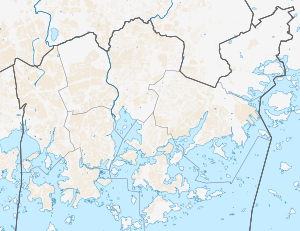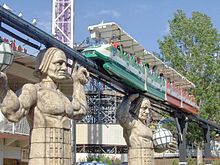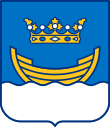Helsinki Central Station
Helsinki Helsingfors | ||||||||||||||||||||||||||||||||||||||||||||||||||||||||||||||||||||||||||||||||||||||||||||||||||||
|---|---|---|---|---|---|---|---|---|---|---|---|---|---|---|---|---|---|---|---|---|---|---|---|---|---|---|---|---|---|---|---|---|---|---|---|---|---|---|---|---|---|---|---|---|---|---|---|---|---|---|---|---|---|---|---|---|---|---|---|---|---|---|---|---|---|---|---|---|---|---|---|---|---|---|---|---|---|---|---|---|---|---|---|---|---|---|---|---|---|---|---|---|---|---|---|---|---|---|---|---|
| VR long-distance train and HSL commuter rail interchange station | ||||||||||||||||||||||||||||||||||||||||||||||||||||||||||||||||||||||||||||||||||||||||||||||||||||
 | ||||||||||||||||||||||||||||||||||||||||||||||||||||||||||||||||||||||||||||||||||||||||||||||||||||
| Location | Kaivokatu 1 Helsinki Finland | |||||||||||||||||||||||||||||||||||||||||||||||||||||||||||||||||||||||||||||||||||||||||||||||||||
| Coordinates | 60°10′19″N 24°56′29″E / 60.17194°N 24.94139°ECoordinates: 60°10′19″N 24°56′29″E / 60.17194°N 24.94139°E | |||||||||||||||||||||||||||||||||||||||||||||||||||||||||||||||||||||||||||||||||||||||||||||||||||
| Owned by | Finnish Transport Agency | |||||||||||||||||||||||||||||||||||||||||||||||||||||||||||||||||||||||||||||||||||||||||||||||||||
| Operated by | VR | |||||||||||||||||||||||||||||||||||||||||||||||||||||||||||||||||||||||||||||||||||||||||||||||||||
| Managed by | VR | |||||||||||||||||||||||||||||||||||||||||||||||||||||||||||||||||||||||||||||||||||||||||||||||||||
| Line(s) | Helsinki–Riihimäki railway Helsinki–Turku railway | |||||||||||||||||||||||||||||||||||||||||||||||||||||||||||||||||||||||||||||||||||||||||||||||||||
| Distance | 0 km | |||||||||||||||||||||||||||||||||||||||||||||||||||||||||||||||||||||||||||||||||||||||||||||||||||
| Platforms | 19 | |||||||||||||||||||||||||||||||||||||||||||||||||||||||||||||||||||||||||||||||||||||||||||||||||||
| Tracks | 19 | |||||||||||||||||||||||||||||||||||||||||||||||||||||||||||||||||||||||||||||||||||||||||||||||||||
| Train operators | VR | |||||||||||||||||||||||||||||||||||||||||||||||||||||||||||||||||||||||||||||||||||||||||||||||||||
| Bus stands | 13 departure, 2 arrival | |||||||||||||||||||||||||||||||||||||||||||||||||||||||||||||||||||||||||||||||||||||||||||||||||||
| Connections | M1 M2 Metro station Helsinki tram lines from Rautatieasema 3 5 6 7 9 from Lasipalatsi 1 2 4 10 Helsinki Buses | |||||||||||||||||||||||||||||||||||||||||||||||||||||||||||||||||||||||||||||||||||||||||||||||||||
| Construction | ||||||||||||||||||||||||||||||||||||||||||||||||||||||||||||||||||||||||||||||||||||||||||||||||||||
| Structure type | Ground station | |||||||||||||||||||||||||||||||||||||||||||||||||||||||||||||||||||||||||||||||||||||||||||||||||||
| Platform levels | 1 | |||||||||||||||||||||||||||||||||||||||||||||||||||||||||||||||||||||||||||||||||||||||||||||||||||
| Other information | ||||||||||||||||||||||||||||||||||||||||||||||||||||||||||||||||||||||||||||||||||||||||||||||||||||
| Station code | HKI | |||||||||||||||||||||||||||||||||||||||||||||||||||||||||||||||||||||||||||||||||||||||||||||||||||
| IATA code | HEC | |||||||||||||||||||||||||||||||||||||||||||||||||||||||||||||||||||||||||||||||||||||||||||||||||||
| Fare zone | A | |||||||||||||||||||||||||||||||||||||||||||||||||||||||||||||||||||||||||||||||||||||||||||||||||||
| History | ||||||||||||||||||||||||||||||||||||||||||||||||||||||||||||||||||||||||||||||||||||||||||||||||||||
| Opened | 1862 (originally) 1919 (current building) | |||||||||||||||||||||||||||||||||||||||||||||||||||||||||||||||||||||||||||||||||||||||||||||||||||
| Rebuilt | 1909 | |||||||||||||||||||||||||||||||||||||||||||||||||||||||||||||||||||||||||||||||||||||||||||||||||||
| Electrified | Yes | |||||||||||||||||||||||||||||||||||||||||||||||||||||||||||||||||||||||||||||||||||||||||||||||||||
| Passengers | ||||||||||||||||||||||||||||||||||||||||||||||||||||||||||||||||||||||||||||||||||||||||||||||||||||
| about 200,000 daily | ||||||||||||||||||||||||||||||||||||||||||||||||||||||||||||||||||||||||||||||||||||||||||||||||||||
| ||||||||||||||||||||||||||||||||||||||||||||||||||||||||||||||||||||||||||||||||||||||||||||||||||||
| ||||||||||||||||||||||||||||||||||||||||||||||||||||||||||||||||||||||||||||||||||||||||||||||||||||
| Location | ||||||||||||||||||||||||||||||||||||||||||||||||||||||||||||||||||||||||||||||||||||||||||||||||||||
 Helsinki Central The location of the station in Helsinki. | ||||||||||||||||||||||||||||||||||||||||||||||||||||||||||||||||||||||||||||||||||||||||||||||||||||
Helsinki Central Station (Finnish: Helsingin päärautatieasema, Swedish: Helsingfors centralstation) (HEC) is the main station for commuter rail and long-distance trains departing from Helsinki, Finland. The station is used by approximately 400,000 people per day, of which about 200,000 are passengers.[1] It serves as the terminus for all trains in the Helsinki commuter rail network, as well as for all Helsinki-bound long-distance trains in Finland. The Rautatientori (Central Railway Station) metro station is located in the same building.
The station building was designed by Eliel Saarinen and inaugurated in 1919. Helsinki Central was chosen as one of the world's most beautiful railway stations by BBC in 2013.[2]
History[]

Helsinki's first railway station was built in 1862 to accommodate trains on the Helsinki–Hämeenlinna line, päärata.[3] The station's plans were drawn by Swedish architect Carl Albert Edelfelt. However, as the popularity of railways grew, the station turned out to be too small, and a contest was organised in 1904 with the intention of producing plans for a new station. The contest received 21 entries, and was won by Eliel Saarinen, with a pure national romanticist design, which sparked off a vigorous debate about the architecture of major public buildings, with demands for a modern, rational style. Saarinen himself abandoned romanticism altogether and re-designed the station completely. The new design was finished in 1909 and the new station building was opened in 1919.
President Kyösti Kallio died at the station on 19 December 1940 of a heart attack while going back home to Nivala after having retired as president. Legend says he died in the arms of Carl Gustaf Mannerheim, but this is most likely part of the construction of Mannerheim's personal cult. In reality, Kallio died in the arms of his adjutant Aladár Paasonen[4] and colonel A. F. Airo.
The clock tower side of the station was damaged in a fire on 14 June 1950.[5]
In the 1960s, the underground Asematunneli pedestrian underpass and underground shopping centre complex was built south of the station. The first surveillance cameras in the station hall were installed in the spring of 1968.[6]
The first electric train arrived at the station on 13 January 1969. After testing, regular electric train traffic was started between Helsinki and Kirkkonummi on 26 January 1969.[7][8]
The Rautatientori metro station, connected to the railway station via Asematunneli, was built part of the Helsinki Metro construction work. It was one of the original metro stations, as it was opened in 1982.
In 2000, a glass roof, which had already been in the original drawings by Eliel Saarinen, was built over the railway station's central platforms, although to a new design. In 2003, the shopping wing Kauppakuja was opened along with a hotel.
The area between the Parliament House and the station contained the VR warehouses, a rail-freight complex. Its original use had long been discontinued in 2006, when it was torn down to make space for the Helsinki Music Centre.
One of the tracks branching to the west just before the central station bypassed the warehouses. It was a freight route, the Helsinki harbour rail, which passed through the inner west side of the city, all the way around the Helsinki peninsula to Katajanokka. Later most of it was closed, and the track only led to the West Harbour. This last section was discontinued in 2009, when sea freight operations were moved to the new Vuosaari Harbour from old harbours near the city centre. Its right-of-way was converted into a pedestrian and bicycle route.
On 7 June 2010, the station was officially renamed Helsingin päärautatieasema-Helsingfors centralstation (Helsinki main, or central, railway station, in Finnish and Swedish), replacing the previous official name Helsingin rautatieasema-Helsingfors järnvägsstation (Helsinki railway station). The Finnish transport bureau uses "Helsinki C" as a shorthand, and there were erroneous news reports that this shorthand would also be taken into official use. Turku Central Station was renamed in a similar manner.[9]
Presidential lounge[]

Helsinki Central houses a private 50-square-metre (540 sq ft) waiting lounge exclusively for the use of the President of Finland and their official guests. The lounge, featuring furniture designed by Eliel Saarinen, has two entrances, a bigger one leading in from Rautatientori Square and a smaller one leading in from the main station hall. The lounge was completed in 1911 and was originally intended for the private use of the Emperor of Russia,[10] but the First World War delayed its official inauguration to 1919, at which point it had been converted into a temporary military hospital, and was afterwards given to the use of the Finnish President.
Features[]

The station is mostly clad in Finnish granite,[11] and its distinguishing features are its clock tower and the two pairs of statues holding the spherical lamps, lit at night-time, on either side of the main entrance. Animated characters based on the statues have recently been featured in some major advertising campaigns by Finland's government-owned railway operator VR, to the extent of releasing rap singles allegedly sung by Kivimiehet ("The stone men").

There are 19 platforms at the station. Platforms 1–3 are on the east side and serve local trains on the Tikkurila route, their tracks stop short of the main station roof. Platforms 4–11, which accommodate long-distance trains, are physically within the station building. Platforms 5–10 serve trains running via Tikkurila to Tampere, St Petersburg and other points north and east, platforms 11 and 12 serve express trains via the Espoo line to Turku. Platforms 12–19, which do not stretch to the building itself, are on the west side and serve local trains on the Leppävaara and Kehärata routes. The tracks funnel into separate express and local tracks for both the Espoo and the Tikkurila routes with the express tracks in the middle and the local tracks on the outside, aligning with their respective platforms. This gives eight principal tracks but there is an additional ninth express track for the Tikkurila route out through the Pasila station, the first stop out, about five minutes or 3 km north of Central.

Helsinki Central serves as a hub for Finnish transport. There are many platforms for local buses on both the west and the east sides of the main station building. The Helsinki Metro Central Railway Station metro station is located under the main station building, linked through Asematunneli, which has entrances in the main hall of the station and at various points in the surrounding streets. The majority of Helsinki's tram routes pass in front of or to the west of the station. The Helsinki central bus station is located at Kamppi Center, about 400 m, or one metro stop, to the west of the railway station. There are two squares near the railway station: the Railway Square and the Eliel Square.[12]
Although the Helsinki Airport is reachable from the station by the I/P commuter rail service, there is also regular bus connections between the station and the airport: two regional buses operated by HSL, and a private express coach operated for Finnair.
Incidents and accidents[]
Over the years, there have been a few incidents at Helsinki Central. However, no lives have been lost as a result :[13]
- 28 August 1926: a passenger train (pulled by Hv2 674) crashed into the passenger hall. 18 were injured.
- 23 October 1944: a passenger train from Turku crashed through a buffer stop. The locomotive ended in the outer hall of the station.
- 5 October 1990: a runaway freight train crashed into the building. Two wagons ended in the passenger hall and many others ended on the platforms.[14]
- 4 January 2010: four empty passenger cars overran the buffers of platform 13, crashing into the building behind it.
Gallery[]
Helsinki Central's tower.
Statues at the station

The metro station can be accessed through the Asematunneli complex

The main entrance on Kaivokatu.

InterCity 2 trains under the glass ceiling

The former ticket hall in the Helsinki Central railway station, later converted into an Italian restaurant.

Scale 1:10 model of VR Class Hr1 1001 in the ticket hall of Helsinki Central Station
See also[]
- Railway lines in Finland
- Finnish Main Line
- Cincinnati Union Terminal
Bibliography[]
- Högström, Hilkka (1996). Helsingin rautatieasema [Helsinki railway station]. Helsinki. ISBN 951-53-0533-0.
References[]
- ^ "Rautatieasema". Visit Helsinki : Helsingin kaupungin virallinen matkailusivusto (in Finnish). 8 November 2011. Retrieved 2 December 2017.
- ^ Jonathan Glancey (3 December 2013). "Ten of the world's most beautiful railway stations". BBC. Retrieved 14 February 2014.
- ^ Neil Kent: Helsinki: A Cultural History, p. 18. Interlink Books, 2014. ISBN 978-1566565448.
- ^ Turtola, Martti: Mannerheimin ristiriitainen upseeri: eversti Aladár Paasosen elämä ja toiminta, WSOY 2012, p. 130. ISBN 978-951-0-36944-9
- ^ Vierivät kivet 3 February 2004
- ^ Helsingin Sanomat 15 January 1969, p.14.
- ^ Helsingin Sanomat 14 January 1969 p. 11
- ^ Helsingin Sanomat 27 January 1969 p. 3.
- ^ Helsingin rautatieasemasta ei tulekaan Helsinki C[permanent dead link], Helsingin Sanomat online edition, 3 June 2010. Accessed 3 June 2010.
- ^ "Helsinki Places: Central Railway Station | Helsinki This Week".
- ^ Glancey, Jonathan. "Ten of the world's most beautiful railway stations". Retrieved 19 November 2017.
- ^ Elielinaukion ja Asema-aukion kehittämiseksi järjestetään kansainvälinen arkkitehtuurikilpailu – hanke on osa laajempaa Rautatieaseman seudun kehittämistä – STT Info (in Finnish)
- ^ Valonen, Kai (2000). Raideliikenneonnettomuuksien tutkinta – kansainvälinen vertailu [Investigation of Rail Accidents – International Comparison] (PDF) (Master's thesis, Helsinki University of Technology, mechanical engineering) (in Finnish). Kai Valonen. Retrieved 18 April 2010.
- ^ Juhana Hietaranta. "Tavarajunan törmääminen Helsingin asemaan 5.10.1990" [The freight train crash at Helsinki central station on 5 Oct 1990] (in Finnish). Seisake.net. Retrieved 18 April 2010.
External links[]
| Wikimedia Commons has media related to Helsinki Central railway station. |
- Buildings designed by Eliel Saarinen
- Railway stations in Helsinki
- Buildings and structures completed in 1919
- Railway stations opened in 1862
- Modernist architecture in Finland
- Buildings and structures by Finnish architects
- National Romantic architecture in Finland
- 1862 establishments in Finland
- Kluuvi









